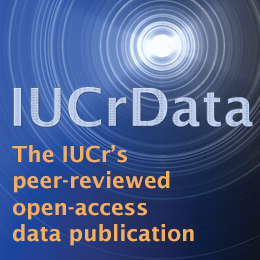
History of crystallography
Georg (Yuri) Viktorovich Wulff
![Georg Wulff [Georg Wulff]](https://www.iucr.org/__data/assets/image/0004/154921/Thumbnail.png)
Figure 1. Georg (Yuri) Viktorovich Wulff. Photo from the "Scientific Heritage of Russia" Electronic Library.
Science, like art, requires creativity,
but creativity without love is impossible.
– G. V. Wulff
In 2023, it will be 160 years since the birth of Georg (Yuri) Viktorovich Wulff (Вульф in Russian, also known as Vulf and Wulff) (Fig. 1). He was born on 22 June 1863 to a large family in the city of Chernigov (according to other sources, in the city of Nizhyn, Chernigov province) of the Russian Empire (now Ukraine). His mother, Lydia Egorovna, was a daughter of a famous teacher, E. V. Gudim, who came from the nobility of the Poltava province. His father, a teacher of literature, Viktor Konstantinovich Vulf, served as the director of the Chernigov, later of Poltava and 6th Warsaw, Gymnasiums. Georg spent his childhood and youth in Warsaw, where in 1880 he graduated from the 6th Warsaw Gymnasium. From childhood, he showed interest in exact disciplines.
After graduating from the gymnasium, Georg entered the Natural Department of the Faculty of Physics and Mathematics of the Imperial Warsaw University (Poland was then part of the Russian Empire). From the second year, he began to engage in scientific work under the guidance of a mineralogist and crystallographer, Professor A. E. Lagorio, and physicists Professor N. G. Egorov and Professor P. A. Zilov. Professor Egorov took the mineralogist student into the world of physics, showing that there are properties of crystals that are reflected in their external forms. The main focus of Wulff's studies was on physics and crystallography, which was then considered a branch of mineralogy. Being just a third-year student, he was awarded the gold medal of the Faculty of Physics and Mathematics for his work “Experimental Study of the Electrical Properties of Quartz”, the topic of which was proposed by Professor Zilov. In this experimental work, this talented student managed to show that the electrification of quartz crystals is associated with a piezoelectric effect. The work was published in the periodical Варшавские университетские известия (Warsaw University News) in 1886. In his fourth year, Wulff was already assisting in lectures on physics by Professor Zilov, who taught physics at the highest methodological level.
After graduating from the University in 1885, on the recommendation of Professor Lagorio, Wulff remained at the University at the Department of Mineralogy to prepare for professorship and, at the same time, was enrolled as an assistant at the Department of Physics. With Professor Lagorio, he studied the heat capacity of minerals, and under the guidance of Professor Zilov, he performed several studies on the dependence of the optical properties of crystals on their crystallographic characteristics. The results of the study of crystals that rotate the plane of polarization were summarized in his 1888 paper "On the Theory of Rotatory Polarization". The study of the physical, primarily optical, properties of crystals led him to create his own direction in science, which was later called "crystal physics". In many cases, experimental studies by G. V. Wulff can rightfully be considered to be pioneering. His contribution to the development of solid-state physics can be assessed from the book by Academician V. D. Kuznetsov, Solid State Physics (1937).
After the master’s exam in 1888, Wulff did his best to be sent to St. Petersburg University, where he worked for six months in the Mineralogical Cabinet. At that time, an outstanding, now world-famous Russian crystallographer E. S. Fedorov, author of the monograph “The Foundation of the Teachings of Figures”, in which he laid the foundations of theoretical crystallography and derived all possible 230 space groups of symmetry of crystals, also worked there. Wulff highly appreciated E. S. Fedorov's achievements and later, with Professor P. von Groth, contributed to the popularization and publication of his works. For example, Wulff published abstracts of Fedorov’s main works in German in Zeitschrift für Krystallographie und Mineralogie, of which von Groth was the founder and an editor, trying to establish the priority of the Russian scientist in the field of theoretical crystallography. Communication with Fedorov influenced his formation as a crystallographer. There he also met V. I. Vernadsky, whom he later found to be a like-minded person, in all respects, not just in science and teaching, but also in political and public issues.
At the beginning of 1889, Wulff was sent abroad, first to Munich, to von Groth, a famous crystallographer and representative of the German crystallographic school, in whose laboratory he laid the foundations of his master's thesis. In addition to working in von Groth's laboratory, Wulff listened to his lectures on crystal physics and attended Professor Zonke's seminars in physics at the Polytechnic School. Studying crystals of salts, he concluded that it is possible to reveal the internal structure of a crystal by correlating its external form and symmetry with physical, primarily optical, properties. In crystals of beryllium sulfate, he discovered a composition of two pseudosymmetric plates, and in a double salt, lithium potassium sulfate, he revealed the rotation of the polarization plane.
Then, in 1890 and 1891, Georg Viktorovich worked in Paris at the laboratory of the famous French physicist Professor A. Cornu, where he studied physical methods for studying crystals, in particular, the elasticity of solid bodies, primarily the properties of glass. Wulff discovered that the Poisson ratio of these materials was not 0.25, as was found by Cornu, but 0.23, which means that glass does not have the properties of an isotropic body. While they tried to find out the cause, V. Foygt also obtained the value of 0.23, which meant that Wulff could not publish his numerous experimental data. Wulf published the results of his work in Paris later, only in 1893–1894, in Warsaw University News. In Paris, Wulff married Vera Vasilyevna Yakunchikova (she took his family name), and together they lived a long life.
Returning to Warsaw, Georg Wulff defended his master's thesis “The Properties of Some Pseudosymmetric Crystals in Connection with the Theory of the Crystalline Structure of the Substance” (1892). Wulff was one of the first crystallographers who, when trying to solve the problem of the structure of crystals, began to use their physical properties, such as optical activity and piezoelectric and elastic properties. Having received the title of Privatdozent of Warsaw University (1893), Wulff began to give lectures on mineralogy and crystallography.
At the same time, Wulff turned to the experimental side of crystallography. For two years, he was engaged in experiments on the growth and dissolution of crystals. He measured relative growth rates of various crystalline faces, building up layers of one crystal upon the layers of another, composed of an isomorphic substance but of different color. Wulff also studied the effect of concentration flows on the morphology of growing crystals. To eliminate irregularities in the growth of crystals, he invented a rotating crystallizer, used thermostats with temperature controllers, and developed a method for obtaining crystals of regular habit. Critical and interesting studies of the growth rate and dissolution of the faces of crystals were carried out by Wulff on the example of Mohr's salt. He showed that the rate of dissolution of various faces of crystals of this salt is almost the same, while the growth rates of these faces significantly differ from each other.
Studying the processes of crystal growth, Wulff modified Curie's principle of the minimum of the surface energy of crystals growing from saturated solutions in equilibrium conditions. It was later called the "Gibbs–Curie–Wulff principle" (or "Wulff Theorem"), according to which the growth rate of the faces of the crystal is proportional to specific surface energies of these faces. The essence of the Wulff theorem can be determined by the following expression: n1:n2:n3:... = k1:k2:k3:.., where ni are the lengths of perpendiculars (Wulff's vectors), directed through the faces from the central point taken inside the crystal (Wulff's point), and ki is the specific surface energy of the face (capillary constants of faces). Thus, normals to the faces are proportional to the capillary constant and express the growth rate of the crystal's faces under constant concentration conditions. At each moment of such stationary growth, the surface energy of the crystal has the lowest value corresponding to the volume that the crystal has at this moment. That is, during the growth of the crystal, provided that constant concentrations are maintained, its faces move away from the growth point of the crystal (Wulff's point) with speeds equal to the Wulff's vectors, which are proportional to the capillary constants.
Wulff published the results of his two-year-long studies in 1895 in Warsaw University News in the work “On the Issue of Growth and Dissolution of Crystalline Faces”, which he presented at the Physics and Mathematics Faculty as a dissertation for the degree of Doctor of Mineralogy and Geognosy. In this work, the author monitored the correlation of external forms and optical properties of crystals with their internal structure and with crystallization conditions. Wulff's modern biographers call it one of the most significant works on crystallography performed at the University of Warsaw. However, at the University itself, this non-traditional pioneer work was not appreciated and was rejected under the pretext of its insufficient volume. Georg Viktorovich was able to defend a dissertation only a year later at the Imperial Novorossiya University in Odessa (1896). After his article appeared in Zeitschrift für Kristallographie und Mineralogie, the theorem on the proportionality of the growth rate of capillary constants of faces was recognized and received the name of the author.
With the advent of two-circle or theodolite goniometers (E. S. Fedorov, 1889), it became easier to measure the angles between crystal faces. E. S. Fedorov was the first to use stereographic projections to present the results of crystal measurements. However, Wulff alone succeeded in developing in 1902 a simple graphical method for processing the results using a stereographic grid. His method turned out to be very convenient; it quickly gained popularity and spread among crystallographers world-wide, and was named after the author – "Wulff net" (Fig. 2).
![[Fig. 2]](https://www.iucr.org/__data/assets/image/0004/154984/Fig2.jpg)
He also proposed the "Wulff ruler" designed by him. Using the Wulff net, you can graphically calculate the symbols of all crystal faces, as well as the crystal constants – axial angles. The Wulff net is still used in crystallography today. In 1904, Wulff published his Guide to Crystallography, which is in many ways a synthesis of his work in this area. In geometric crystallography, one of the most important works of Wulff was devoted to the analysis of errors in measuring crystals with a theodolite goniometer.
An interesting feature of teaching at the University of Warsaw was that teachers could declare optional courses that were related to their personal interests. Wulff took advantage of this and, in the 1896/1897 academic year, declared an optional course on the symmetry of crystals for second- and third-year students. In this course, he presented crystallographic symmetry in an original way, using successive reflection only in planes (textbooks by G. V. Wulff Fundamentals of Crystallography, 1923, and Crystals, Their Formation, Type and Structure, 1926) (Fig. 3).
![[Fig. 3]](https://www.iucr.org/__data/assets/image/0005/154985/Fig-3.JPG)
Wulff considered planes of symmetry to be the main "independent elements of symmetry", as reflection cannot be reproduced by either rotation or inversion taken separately. He deduced all 32 types of symmetry of crystals, which today we call crystallographic point groups, and came up with his own nomenclature and ways of designating it (Fig. 4).
![[Fig. 4]](https://www.iucr.org/__data/assets/image/0006/154986/Fig-4.jpg)
Wulff wrote about the wholeness of the concept of symmetry, that symmetry is a consequence of reflection in one or more mirror planes acting either separately, or in pairs (axes are obtained), or in threes (inversion center is obtained). Contemporaries did not accept Wulff's proposals and continued to use the familiar symbols of Schoenflies, and later the international symbols (Hermann–Maugin).
In 1897, Wulff accepted an offer from the Ministry of Education and left to work as an extraordinary professor at the Department of Mineralogy and Crystallography at the Imperial Kazan University. However, after A. E. Lagorio was appointed as director of the Warsaw Polytechnic Institute, Wulff returned to Warsaw in 1899 and held the position of ordinary professor at the Department of Mineralogy.
The revolutionary situation in Russia in 1905 was accompanied by student unrest. In particular, students demanded that teaching at Warsaw University should not be conducted in Russian, but in Polish, the native language of most of the students. Wulff considered these requirements fair and publicly supported the students, which caused the discontent of colleagues and the leadership of the faculty. In connection with student unrest in 1906, the classes were suspended and resumed only in 1908. In this situation, Wulff worked only until he had gained 20 years of experience, which gave him the right to resign the professorship. He decided to finally leave Warsaw University and go to Geneva, where his family then lived. Saying goodbye to students of Warsaw University, Wulff called on them to be selflessly devoted to science: “... The desire for truth will only be fruitful when you are imbued with love for the truth. Science, like art, requires creativity, and creativity without love is impossible. ... Love the truth and be, above all, humans, in the noble sense of the word ... ".
In 1907, Wulff moved to Moscow at the invitation of V. I. Vernadsky. In the same year, he was approved as a Privatdozent of the Department of Mineralogy of the Physics and Mathematics Faculty of Moscow University. Since 1908, Wulff also read the crystallography course at Moscow University and at the A.L. Shanyavsky Moscow City People's University. In 1909 and 1910, at Moscow University, Wulff lectured on crystallography and crystal optics, using his crystallographic net in practical classes. Thanks to the support of Vernadsky, who was the head of the Department, Wulff got the opportunity to found his crystallographic laboratory, which was equipped, at his own expense, in the premises of the Mineralogical Institute. A. V. Shubnikov, who later became an outstanding Russian crystallographer, worked there as a student. At Moscow University, Wulff closely communicated with the famous physicist P. N. Lebedev, and actively participated in the work of colloquia at his physical laboratory, on the basis of which the Moscow Physical Society was organized in 1911. Lebedev was elected the first chairman of the Society (Wulff was elected the chairman of the Society in 1921). At the same time, he taught a course in crystallography at Moscow University and at the A.L. Shanyavsky Moscow City People's University.
At the University, Wulff continued to pursue studies in geometrical crystallography and started a new topic – the study of liquid crystals, about which he made reports at the general meeting of the Russian Physicochemical Society (1908), and at the XII Congress of Russian Natural Scientists and Physicians, in the Physics section (1910).
However, shortly after a strike at Moscow University in 1911, Wulff, because of his independent nature and beliefs, left the University together with a group of progressive professors in protest against the reactionary policy of the Minister of Education, L. A. Casso. Moscow University lost its best professors, including P. N. Lebedev, V. I. Vernadsky, N. A. Umov, N. D. Zelinsky and K. A. Timiryazev.
Wulff went to work at the A.L. Shanyavsky Moscow City People's University, in which he had already given a course of crystallography lectures starting from its founding in 1908. Wulff’s crystallographic laboratory was also transferred there, for which he himself purchased equipment and materials, spending all his university earnings. There, Wulff carried out his experimental work. At the same time he gave lectures on crystallography and mineralogy at Moscow Higher Women's Courses.
In 2022, it will have been 110 years since the fundamental discovery of the diffraction of X-rays by crystals made by Max von Laue, a Privatdozent at the University of Munich, and his colleagues (article in Nature in 1912, the 1914 Nobel Prize). Wulff immediately appreciated the value of this discovery. He founded the first X-ray laboratory in Russia and actively took up the study and deciphering of X-ray diffraction by crystals. Based on the experiments of Laue and independently from W. L. Bragg, Wulff theoretically deduced the condition for the interference of X-rays reflected from crystals, known in Russian-speaking literature as the “Wulff–Bragg” or “Bragg-Wulff formula”. In the same 1913, a month earlier, W. L. Bragg published the well-known equation called "Bragg's law":
2dsinθ = nλ
(where d is the interplanar spacing, θ is the glancing angle (or Bragg corner), n is the diffraction order and λ the wavelength).
Studying the history of the development of X-ray diffraction analysis, the Russian historian of chemistry, Doctor of Science A. M. Smolegovsky, noted that the question of the priority of deriving the Bragg–Wulff equation remains unclear. It is known that both scientists made their reports on this topic as early as the end of 1912, and published their work at the beginning of 1913. Brief information on the content of Bragg's report was published in Nature in December 1912. In an article dedicated to the 75th anniversary of the discovery of X-ray diffraction, an outstanding scientist in the field of solid-state physics and X-ray diffraction analysis, G. S. Zhdanov, wrote that the formula that was empirically found by Bragg and theoretically established by Wulff can rightly be considered the “Wulff–Bragg formula”.
Professor A. K. Boldyrev (a disciple of E. S. Fedorov) wrote in the textbook on his lectures Fundamentals of Crystallography (1926) and in the book Crystallography (1934) that “this is an empirical law, derived even earlier by Professor G.V. Wulff on the basis of Laue's experimental data." The theoretical substantiation of this law was derived in different ways – Bragg substantiated it more simply and elegantly than others. Smolegovsky writes that Bragg's student H. Lipson later opposed the use of the expression "Wulff–Bragg Law" in scientific and educational literature. Wulff himself, in the book Crystals, Their Formation, Form and Structure (1926, second edition), gives his original derivation of the formula with different notation and also notes that "this equation, fundamental to the whole phenomenon, was independently derived by W. L. Bragg and the author of this book". Considering that Bragg and Wulff were working independently in this field at the same time, it is fair to say that both scientists deserve to have this law named after them – the "Bragg–Wulff Law". The English version of Wikipedia formulated it as follows: "Bragg's law”, “Wulff–Bragg's condition” or “Laue–Bragg interference”.
In 1913–1914, father and son Bragg, inspired by Laue's discovery, improved the mathematical apparatus and technique (ionization spectrometer) and devised a standard procedure for determining the structures of crystals. They determined the structures of a number of crystalline substances, such as NaCl, KCl, KBr, ZnS (sphalerite) and diamond. The work was extremely successful and already in 1915 the first monograph by W. H. Bragg and W. L. Bragg was published, in which they described the structures of 33 substances. In the same year, father and son Bragg received the Nobel Prize, but it was awarded only in 1919, after the end of World War I. Lawrence Bragg is still the youngest Nobel laureate to receive this prestigious award for natural science research.
Apparently, because of this success, the name "Bragg's law" is widely used in the world scientific literature for the well-known expression, which allows one to determine the crystal structure from the diffraction pattern, while the name of Professor Wulff remained in the shadows. When translating the Braggs' book X-rays and the Structure of Crystals (1916), Wulff highly appreciated the work of his English colleagues. He wrote that, despite the simultaneous derivation of this law by the author of the book and the translator, "this coincidence in no way detracts from the significance of the results obtained by the Braggs, and it is in these results that the interest of the research of these scientists lies."
This is how X-ray diffraction analysis – the main reliable method for determining crystal structures – was born. In 2023, the famous Bragg–Wulff formula, which marked the beginning of a new scientific discipline, X-ray crystallography, will be 110 years old. The accumulation and analysis of data on the structure of crystals led to the creation of the first tables of atomic radii (W. L. Bragg, W. Goldschmidt, L. Pauling), which laid the foundations of a new science – crystal chemistry. The significance of these pioneering works can hardly be overestimated, since subsequently, extensive structural databases were created, which are necessary for the fruitful and efficient work of scientists from various fields.
Professor A. K. Boldyrev wrote about the significance of Laue's discovery, which also applies to the Bragg–Wulff law: "From now on, more than ever before, Crystallography is most intimately connected with Physics and Chemistry, and the further development of this science goes before our eyes under the sign of this connection. And we clearly realize that only in this connection lies the guarantee of its future achievements". Paying tribute to the work of Professor Wulff in the field of properties of crystals, he begins the section "Physical crystallography" with a photograph of Yuri Viktorovich Wulff and the dates of his life (Fig. 5).
![[Fig. 5]](https://www.iucr.org/__data/assets/image/0007/154987/Fig-5.jpg)
Unfortunately, the successful work of Wulff, initiated in 1913, was interrupted by World War I, and then by the Russian October Revolution. Active scientific activity in Russia was suspended. At the behest of the times, during World War I (1914–1918), Wulff and his staff developed a new method of making X-ray screens for medical purposes. In Wulff’s X-ray research laboratory, almost all of the instruments and apparatus were made in the laboratory's workshop, and in 1912–1913 some of the equipment for working with X-rays was made by Wulff himself.
More than once Wulff was forced to abruptly change his difficult life of a Russian scientist in the midst of successful scientific work because of his high civic position. For example, soon after he had equipped a room for his scientific studies at Shanyavsky University, he again had to create everything anew within the walls of Moscow University after the October Revolution. In 1917, Wulff was reinstated as Privatdozent of the Department of Mineralogy at Moscow University, where he transferred his X-ray laboratory. In 1917, Wulff was elected a member of the Council of the Moscow P.N. Lebedev Physical Society, and since 1921 he was its chairman. In 1918 he became Professor of the Department of Mineralogy, Professor of the Department of Physics (1919–1925) and Professor of the Department of Crystallography (1922–1925) of the Faculty of Physics and Mathematics of Moscow University. In 1919, at the initiative of Wulff, the Institute for Physical and Chemical Research of Solid Matter was established at the Supreme Economic Council, in which he became director and head of the Department of Crystal Physics. In 1921, Wulff was elected a corresponding member of the Russian Academy of Science, and as a member of the Russian Academy of Artistic Sciences. In 1922, the Institute of Physics and Crystallography (later the Research Institute of Physics) was established at Moscow University, which was rightfully headed by Wulff.
During years of his creative studies in science, Wulff published more than 150 scientific and popular science works in Russia and abroad. Here are some of his main works: Crystals, Their Formation, Type and Structure (1917, 1926), Life of Crystals (1918), Fundamentals of Crystallography (1923), Guide to Crystallography (1904), Symmetry and its Manifestation in Nature. Lectures (1907), Practical Course in Geometric Crystallography with a Stereographic Grid (co-authored with A. V. Shubnikov, 1924).
It should be noted that Wulff, who was a man with broad scientific views, did a lot of pedagogical and educational work. He was the chairman of the Society for the Care of Students in the Tverskoy District of Moscow and the chairman of the Literacy Society in Tarusa, Kaluga province, as well as the chairman of the N.A. Umov Society for the Propagation of Physical Sciences. Wulff's work testifies to his great interest in the history of science. Possessing literary talent and the gift as a popularizer of science, in his books and lectures Wulff spoke about the history and successes of science. His reports were always accompanied by spectacular demonstrations. He contributed to the history of science with works on the work of such scientists as R. J. Haüy (1922), P. N. Lebedev (1912) and Nobel laureates W. H. Bragg and W. L. Bragg (1916).
In lectures on crystallography, Wulff used microprojections, which made it possible to immediately reproduce and visually demonstrate the phenomena that occur during the growth and development of crystals. He taught various courses: "On the Phenomena of Crystallization", "General Course of Crystallography for Mathematicians and Physicists", "The Theory of the External Shape of Crystals", "X-Ray Methods for the Study of Crystals", "Special Issues of Crystallography", "Introduction to Crystallography", "Crystal Physics", "Thermal Analysis as Applied to Mineralogy".
Wulff educated worthy disciples, who followed his trends and traditions in science: most close to him were A. V. Shubnikov (piezoelectricity and crystal optics), E. E. Flint (geometric crystallography) and S. A. Veiberg (crystal growth). Wulff's desire to convince crystallographers that this science (crystallography) is a part of solid-state physics was later confirmed and continued in the work of Academician A. V. Shubnikov. After Wulff's death, he developed his crystal physics direction and the direction associated with the symmetry of crystals. In 1943, the Laboratory of Crystallography, created by A. V. Shubnikov, was transformed into the Institute of Crystallography of the USSR Academy of Sciences, which he headed from the moment of its creation until 1962. And it is no coincidence that the institute now bears the name of Academician A. V. Shubnikov.
It is also known that, in addition to science, Wulff was fond of music and theater, vocals and photography. In the last years of his life, since 1914, Wulff spent every summer with his creative family in Tarusa at the rented suburban dacha "Pesochnoe". It was the dacha where the Tsvetaev family used to live, and where the artist V. E. Borisov-Musatov also lived and worked. This house became not only the study of the scientist but also the center of the cultural life of Tarusa. The Wulffs organized "Musical Subbotniks" at their dacha, giving free concerts of classical and folk music. Wulff himself also took part in these evenings, performing romances to the accompaniment of his wife, Vera (Fig. 6).
![[Fig. 6]](https://www.iucr.org/__data/assets/image/0008/154988/Fig-6.jpg)
The scientist was very musical and had a pleasant baritone, which allowed him to participate in operas that were staged in Polenovo and in the People's House in Tarusa. Thanks to the efforts of the Wulff family, autumn exhibitions of artists were organized. In memory of these amazing and talented people, in November 2016, the Tarusa Museum of Local Lore hosted an express exhibition dedicated to the 145th anniversary of the birth of the artist and musician Vera Wulff and her famous husband Georg Wulff. Vera had instilled in her children a love of the arts. Their elder son, Vladimir, became a professional pianist, and the younger, Boris, an artist. Boris's talents came to fruition when he was about 30, when he found himself abroad after World War I and the October Revolution.
It should be noted that the picturesque town of Tarusa on the banks of the beautiful Oka river has always attracted talented creative people – writers, poets, artists and musicians (K. G. Paustovsky, M. I. Tsvetaeva, V. D. Polenov, S. T. Richter and others).
It is interesting that Professor Wulff himself preferred the name of Georg, Georg (Prof. G.V. Wulff) as the author of his books, but both names of Professor Wulff are used in the literature - Georg and Yuri. According to his will, he was buried in the town of Tarusa above the Oka River (Kaluga Region) next to his wife, Vera (1871–1923). The monument over his final resting place bears the Cyrillic inscription (which reads as): “Fizik-kristallograf, chlen-korrespondent AN SSSR Yurii Viktorovich Vulf (1863–1925)" [Physicist-crystallographer, Corresponding Member of the Academy of Sciences of the USSR, Yuri Viktorovich Wulff (1863–1925)]. Later, their son Vladimir was also buried there (Fig. 7).
![[Fig. 7]](https://www.iucr.org/__data/assets/image/0009/154989/Fig-7.jpg)
A handsome and noble man with a broad outlook, who was in love with science and art, will remain in history with achievements bearing his name and with the good memories of his disciples and followers (Fig. 8).
![[Fig. 8]](https://www.iucr.org/__data/assets/image/0010/154990/Fig-8.jpg)
A lot has been written about Georg Viktorovich Wulff, an outstanding Russian physicist, one of the greatest crystallographers (see references). Most fully and interestingly Wulff's creative life is presented in the book by A. S. Sonin. Nevertheless, there remains an impression that his contribution to the development of science is underestimated. His life coincided with revolutionary events in the world and in science, which changed his life and scientific destiny more than once. Georg Wulff turned out to be one of the outstanding scientists in the constellation of world-renowned scientists such as Fedorov, Groth, Laue and the Braggs. They communicated closely and jointly moved science, making great discoveries for the benefit of science and humankind. In 1924, shortly before his death, Wulff traveled to Germany, England and France, where he spoke with the leading crystallographers M. Laue, W. L. and W. H. Bragg, M. Myers and others, and in Paris he made a report on his work in the field of crystal physics.
References
Сонин, А. С. (2001). "Георгий Викторович Вульф. 1863–1925". М.: Наука.
Sonin, A. S. (2001). "Georgiy Viktorovich Vulf. 1863–1925". M.: Nauka.
Храмов Ю. А. (1983). Вульф Георгий (Юрий) Викторович. Физики: Биографический справочник под ред. А. И. Ахиезера. Изд. 2-е, испр. и доп., М.: Наука.
Khramov, Yu. A. (1983). "Vulf Georgiy (Yuriy) Viktorovich. Fiziki: Biograficheskiy spravochnik (Physicists: A Biographical Directory). 2nd ed. M.: Nauka.
Щербаков, Р. Н. (2013). Стремление и любовь к научной истине. К 150-летию со дня рождения члена-корреспондента РАН Г.Н. Вульфа. ВЕСТНИК РОССИЙСКОЙ АКАДЕМИИ НАУК, 83(6), 562–569.
Shcherbakov, R. N. (2013). "Stremleniye i lyubov k nauchnoy istine. K 150-letiyu so dnya rozhdeniya chlena-korrespondenta RAN G.N. Vulfa" ("The pursuit and love of scientific truth. On the occasion of the 150th anniversary of the birth of Corresponding Member of the Russian Academy of Sciences G.N. Wulff"). Vestnik Rossiyskoy Akademii Nauk, 83(6), 562–569.
Памяти Георгия Викторовича Вульфа (2014). КРИСТАЛЛОГРАФИЯ, 59(3), 494–497.
"Pamyati Georgiya Viktorovicha Vulfa" ("In memory of Georg Viktorovich Wulff") (2014). Kristallografiya, 59(3), 494–497.
Frank-Kamenetsky, V. A. "WULFF, GEORG (YURI VIKTOROVICH)".
Вульф, Г.В. Автобиография от 22 ноября 1921 г. Архив Академии Наук СССР, фонд 1, onись 1-1921, дело 11, листы 47–49, Автограф.
Vulf, G. V. Autobiography dated 22 November 1921. Archive of the USSR Academy of Sciences, fund 1, inventory 1-1921, file 11, sheets 47–49, autograph.
Жданов, Г. С. (1987). 75летие открытия дифракции рентгеновских лучей. Успехи физ. наук. 153(4).
Zhdanov, G. S. (1987). "75-letiye otkrytiya difraktsii rentgenovskikh luchey" ("75th Anniversary of the Discovery of X-ray Diffraction"). Uspekhi fiz. Nauk (Soviet Physics-Uspekhi). 153(4).
Шубников, А. В. (1975). То, что сохранила память. В кн.: Избранные труды по кристаллографии. М., С. 12, 18–20.
Shubnikov, A. V. (1975). "To, chto sokhranila pamyat" ("What is kept in memory"). "Izbrannyye trudy po kristallografii" ("Selected Works on Crystallography"). M., pp. 12, 18–20.
Флинт, Е. Е. (1951). Воспоминания о Ю.В. Вульфе. Тр. Ин-та кристаллографии АН СССР, 6, 3–14.
Flint, E. E. (1951). "Vospominaniya o Yu.V. Vul'fe" ("Memories of Yu.V. Wulff"). Trudy Instituta Kristallografii AN SSSR (Proc. Inst. Crystallogr. USSR Acad. Sci.), 6, 3–14.
Записка об учёных трудах профессора Московского университета Г.В.Вульфа. Декабрь 1921 г. // Архив Академии Наук СССР, фонд 1, onись la, дело 169. Приложение к § 201 протокола заседания ОС РАН 10 декабря 1921 г.
"Zapiska ob uchonykh trudakh professora Moskovskogo universiteta G.V.Vul'fa. Dekabr' 1921 g." ("Note on the scientific works of Professor of Moscow University G.V. Wolf. December 1921") // Arkhiv Akademii Nauk SSSR (Archive of the Academy of Sciences of the USSR), fund 1, inventory la, file 169. Appendix to § 201 of the minutes of the meeting of the OS RAS on 10 December 1921.
Человек дня: Георгий Вульф / «Полит.ру» – информационно-аналитический портал, 22 июня 2021.
"Chelovek dnya: Georgiy Vul'f" ("Person of the day: Georg Wulff"). Polit.ru - information and analytical portal, 22 June 2021.
Смолеговский, А. М. (2009). «У. Л. Брэгг и его роль в создании структурной кристаллохимии» Москва.
Smolegovskiy, A. M. (2009). "U. L. Bregg i yego rol' v sozdanii strukturnoy kristallokhimii" ("W. L. Bragg and his role in the creation of structural crystal chemistry"). M.
Болдырев, А. К. (1926). Основы Кристаллографии» Издание КУБУЧ’а. Ленинград.
Boldyrev, A. K. (1926). Osnovy Kristallografii (Fundamentals of Crystallography). KUBUCH edition. Leningrad.
Болдырев, А. К. (1934). Кристаллография. ОНТИ.НКТП.СССР. Государственное научно-техническое горно-геолого-нефтяное издательство. Ленинград, Москва, Грозный, Новосибирск.
Boldyrev, A. K. (1934). Kristallografiya (Crystallography). ONTI NKTP SSSR. Leningrad, Moscow, Grozny, Novosibirsk.
Кузнецов, В. Д. (1937). «Физика твёрдого тела», 2 изд., т. 1. Томск.
Kuznetsov, V. D. (1937). Solid State Physics, 2nd ed., Vol. 1. Tomsk.
Bibliography (V. F. Frank-Kamenetsky)
I. Original Works
Some of Wulff’s writings on crystallophysics and crystallography were collected as lzbrannye raboty po kristallofizike i kristallografi (Selected Works in Crystallophysics and Crystallography, Moscow, 1952).
Separately published early works include “Opytnoe issledovanie elektricheskikh svoystv kvartsa” (“Experimental Investigation of the Electrical Properties of Quartz”). Varshavskia universitetskia izvestia, 3 (1886), 1–17;
“O stroenii kristallov kvartsa” (“On the Structure of Quartz Crystals”) in Zapiski Imperatorskago mineralogicheskago obschestva, 2nd ed., series 25 (1889), 341–342;
“Ob uproshchenii kristallograficheskikh vychisleny” (“On the Simplification of Crystallographic Computation”) ibid., 29 (1892), 58–64;
“Svoystva nekotorykh psevdosimmetricheskikh kristallov v svyazi s teoriey kristallicheskogo stroenia veshchestva” (“Properties of Certain Pseudosymmetrical Crystals in Relation to the Theory of the Crystal Structure of Matter”) ibid., 29 (1892), 65–130,
his master’s thesis: “K voprosu o skorostyakh rosta i rastvorenia kristallicheskikh graney” (“On the Question of the Velocity of Growth and Dissolution of Crystal Faces”), in Varshavskia universitetskia izvestia, 7 (1895), 1–40; 8 (1895), 41–56; n.s., 1 (1896), 57–88; 2 (1896), 89–122; his doctoral dissertation also in German in Z. Kristallogr. Mineral. 34 (1901), 449–530;
“Die Symmetrieebene als Grundelement der Symmetrie,” ibid, 27 (1897), 556–558;
“Untersuchungen im Gebiete der optischen Eigenschaften isomorpher Krystalle,” ibid., 36 (1902), 1–28;
“Ein Beitrag zur Theodolithmethode,” ibid., 37 (1903), 50–56; and
“Untersuchungen über die Genauigkeitsgrenzen der Gesetze der geometrischen Krystallographie,” ibid., 38 (1904), 1–57; and Rukovodstvo po kristallografii (Guide to Crystallography), Warsaw, 1904.
Subsequent works were Simmetria i ee proyavlenia v prirode (Symmetry and Its Appearance in Nature), Moscow, 1908;
“Über die Krystallisation des Kaliumjodods auf dem Glimmer”. Z. Kristallogr. Mineral. 45 (1908), 335–345;
“Zur Theorie des Krystallhabitus,” ibid., 433–472;
“Über die Natur ‘flussiger’ und ‘fliessender’ Krystalle,” ibid., 46 (1909), 261–265;
“Über die Kristallröntgenogramme”. Phys. Z. 14 (1913), 217–222;
“O kapillyarnoy teorii formy kristallov” (“On the Capillary Theory of Crystal Forms”), in Zhurnal Russkago fiziko khimicheskago obshchestva pri Imperatorskom St–Peterburgskom universitete, 48 (1916), 337–349;
Kristally, ikh obrazovanie, vid i stroenie (Crystals, Their Formation, Type and Structure), Moscow, 1917; 2nd ed., edited and annotated by M. M. and S. Sabshnikov, 1926);
Zhizn crystallov (The Life of Crystals), Moscow, 1918;
Osnovy kristallografii (Principles of Crystallography), Moscow, 1923, 2nd ed., 1926;
Praktichesky kurs geometricheskoy kristallografü so steregraficheskoy setkoy (“Practical Course in Geometrical Crystallography with a Stereographic Net”), Moscow, 1924; and
“O molekulyarnoy strukture muskovita” (“On the Molecular Structure of Muscovite”), Trudy Instituta prikladnoi mineralogii i metallurgii, 25 (1926), 22–29.
II. Secondary literature
On Wulff and his work, see Leleyn, G. G. & Kirsanov, G. A. (1951). “Khronologichesky ukazatel trudov Y. V. Vulfa” (“Chronological Guide to the Works of Y. V. Vulf”). Trudy Instituta kristallografii. Akademiys nauk SSSR, 6, 15–24
and von Laue, M. (1943). "Der Wulffsche Satz für die Gleichgewichtsform von Kristallen". Z. Kristallogr. Mineral. 105, 124–133.
Larissa Zasurskaya is located at the Chemistry Department of Moscow State University, Russia.
Copyright © - All Rights Reserved - International Union of Crystallography









